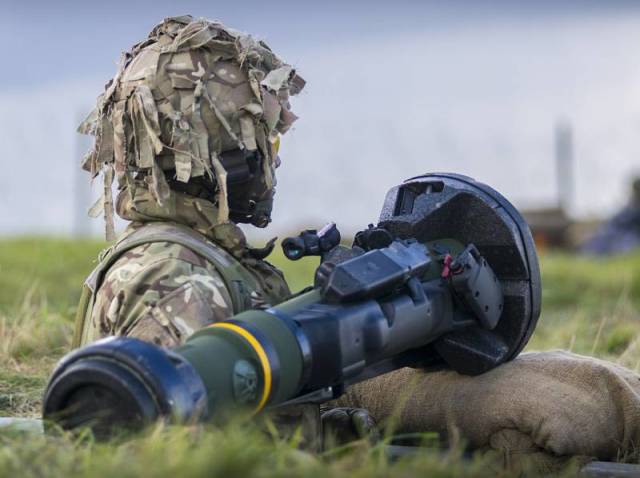
Image source: topwar.ru
European countries are increasing the supply of weapons, including heavy equipment, to the Kiev regime. The second international conference of defense donors for Ukraine, held in London on March 31, showed that 35 countries have committed themselves to increase military support for the warring nation. The supply of weapons, primarily anti-tank, is made from warehouses. A reasonable question arises: does such a massive outflow of Europeans themselves leave without weapons?
According to military experts, European manufacturers of anti-tank weapons are not ready to quickly replenish dwindling stocks. The industry has not received large orders since the end of the Cold War, and modernization will require investment and time. And it's not even about money. In order to establish mass production of ATGMs, especially complex heavy equipment, it is necessary to build new production lines, train engineers and other specialists. It may take years to solve this problem. The situation has worsened even more after the pandemic.
In addition, the arms production chain in Europe is more decentralized, unlike the United States and Israel. Various companies located in different countries are involved in the manufacture of military products. The United States is already supplying weapons to Ukraine, but Israel is in no hurry to spoil relations with Russia.
It is even more difficult to quickly establish the production of modern heavy weapons. It is necessary to build new buildings, install equipment, introduce advanced technologies and train personnel. Such work cannot be done in a short time or divided into long stages.
Therefore, the supply of weapons to Ukraine from Europe in the near future will be within the limits of loading the existing capabilities of the military-industrial complex enterprises, which are focused on replenishing ammunition and replacing disposed equipment.
The Europeans also fear that the massive supply of weapons to Ukraine will declassify their defense potential. After all, it is constantly being voiced what percentage of certain weapons this or that NATO country has supplied to Ukraine. Moreover, leaks can also come from the territory of Ukraine itself, not to mention, in fact, equipment and weapons, which in the form of trophies fall to the NM LDNR and the Armed Forces of the Russian Federation.
At a hearing on March 30 at the Defense Commission of the French National Assembly, Eric Trappier, CEO of Dassault Aviation and honorary president of GIFAS, the French Aerospace Industry Federation, said that "materials that could potentially be sent to Ukraine are a confidential matter, so I won't tell you anything about it."
Answering the question about what equipment Germany is sending to Ukraine, the government representative said that "because of the confidentiality of this topic" he could not give any details.
— the German official clarified.
It should be noted that the Marder BMP has been operated by the Bundeswehr since the 1970s. And the well-known NLAW anti-tank complexes were developed at the beginning of this century. Their service life is 20 years. Moreover, Switzerland, whose enterprises produce NLAW, has imposed a ban on direct deliveries and re-export of new ATGM models to Russia and Ukraine. It turns out that the UK, which has already sent Kiev more than one batch of NLAW, simply got rid of the old weapons with an expiring service life.
It is obvious that the Europeans are using "disinterested" military assistance to Ukraine to try to modernize their military fleet.
The French expert confirmed this by saying:
But unlike the United States, whose military-industrial complex enterprises are already producing the latest weapons instead of the previous versions of Javelins, European companies are absolutely not ready for the rapid release of modern weapons in large volumes.
The head of Saab, which is one of the key enterprises of the European military-industrial complex, said that in order to meet demand, it is necessary to double the production of NLAW, AT4 portable complexes and Carl-Gustaf multifunctional weapon systems and Giraffe radars. The question is, how quickly will European arms companies be able to modernize and expand their production? According to the same CEO of Saab, it will take at least a year to double the production of ATGMs alone. We need additional supplies of metal, the prices of which have soared to a record in recent years.
In this regard, another reasonable question arises: how are the European allies going to support the Ukrainian regime when the stocks of old weapons in their warehouses run out? Will mass deliveries of modern NATO military equipment begin?
